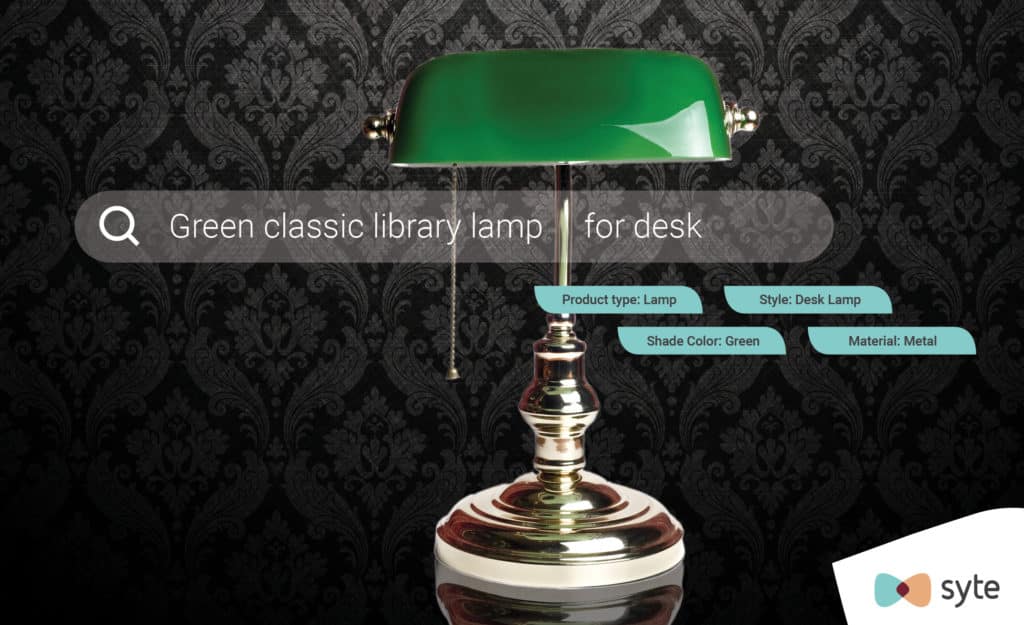The rapid evolution of eCommerce over the past few years has had a major impact on consumer behavior and expectations, pushing the industry to innovate and do better than the status quo. As discussed in Part 1 of our series, a positive site search experience is a fundamental element of customers’ online shopping journeys. For home decor brands and retailers, settling for the conventional, static state of site search isn’t going to cut it in today’s competitive environment with rising consumer standards.
In this second installment of our guide to eCommerce site search for home decor, we’ll take a closer look at the shortcomings of traditional site search and the exciting opportunities that a newer infrastructure creates for on-site search users.
The Limitations of Conventional Site Search and Its Impact on the Customer Experience
Typical eCommerce site search solutions are not equipped to do their jobs. What’s supposed to be a bridge between shopper intent and “add to cart” often becomes a barrier to purchase. The problem is that traditional site search engines work with a limited set of data. They rely on a faulty foundation of inconsistent and insufficient product tags, as well as keyword weighting functions that often fail to provide the right results — ultimately driving would-be shoppers out the door.
When they know what they want, consumers are more likely to type in detailed search queries that include multiple descriptors and attributes. For example, a shopper might search for, “mushroom vintage lamp orange glass.” This shopper has a very specific image of what she wants. Unfortunately, most product catalogues do not include sufficiently enriched and detailed metadata to support these queries. As a result, search engines today won’t comprehend this type of query, understand the priority or relationship between keywords, or correctly identify synonyms.

An average site search tool would likely produce results for mushroom-shaped lamps of various colors and materials, because it wouldn’t understand that “orange” and “glass” are high-priority search terms, even though they are the last keywords in the query. Or it may produce results in shades of beige if “mushroom” is a color name used in the brand’s catalogue.
To put it plainly, there’s a huge mismatch between how regular shoppers search for products and the way textual search processes requests and produces results.
The Pitfalls of On-Site Search, by the Numbers
A large-scale usability study of eCommerce search by the Baymard Institute reveals exactly how poorly equipped the average site search tool is. Here are some of the study’s key findings:
- 61% of eCommerce sites are unable to produce relevant search results if a shopper doesn’t input search terms that match the company’s product meta tags exactly. For example, if your shopper searches for “bedroom mirror” but you have it tagged as “vanity,” your search engine might not surface the right results.
- 46% of sites don’t support thematic search queries, such as “children’s room” or “modern dining set.”
- 32% can’t register symbols or abbreviations for even the most basic units. Your shopper on the hunt for “118 in sofa” will probably not see all of the 118 inch long sofas you offer in the results page.
- 27% are unable to produce the right results if users misspell a single character in a product title. Even an accidental typo will interfere.
- 25% don’t support non-product search queries, such as “returns,” “customer support,” or “order tracking.”
When the customer experience has never been more important, the result of all of these shortcomings is a woefully disappointing experience for any shopper. An individual who comes to your site inspired but encounters this type of search will not be motivated to buy, leading to lost revenue and diminished loyalty.

More than three-quarters of shoppers (76%) say it’s now easier than ever to take their business elsewhere. If a brand or retailer doesn’t offer an experience that matches their expectations, consumers will simply shop somewhere that will.
In other words, you might actually have the living room furniture of your shopper’s dreams, but if they can’t find it easily, they will turn to your competitor.
A New Infrastructure for eCommerce Search That Matches the Way Contemporary Customers Shop
Fortunately for home decor brands and retailers, the future of on-site search is getting brighter. Thanks to the development of cutting-edge, new technologies, you can now provide an intuitive and accurate search experience that actually does what it’s supposed to.
Say hello to Augmented Site Search. This next-generation site search infrastructure is one that understands how real consumers think and search for items. It intuits their needs and presents the products they will want to buy with optimal levels of accuracy and relevance.

It leverages emerging technology to replace the inadequate and outdated text search architecture that most home decor brands and retailers currently have in place. Unlike its predecessors, Augmented Site Search combines visual AI and natural language processing (NLP) technology to automatically enrich—or “augment”—product tags and accurately decipher shoppers’ context and intent.
How Does Augmented Site Search Work?
Visual AI scans the images in your product catalogue and enhances product metadata with additional, detailed “deep tags” to create a richer database for search based on visual and vertical-specific attributes and their synonyms. By automatically enriching product tags — down to the most granular details — visual AI ensures the right items will be found and presented when a shopper enters a search.
Without the limitations of manually entering product tags, you can create a robust and always-up-to-date database that surfaces the right items for every search query. Meanwhile, NLP and a sophisticated rule engine work to contextualize and interpret shoppers’ queries (typos and all) to deliver hyper-relevant, high-converting results.
For example, imagine a shopper searches for “green classic library lamp for desk.” A conventional search engine may fail to prioritize “desk” since this keyword appears last, presenting floor lamps instead. Or worse yet, it may return results for desks instead of lamps, failing to understand the relationship between the words in the query. But with Augmented Site Search, the search engine understands exactly what our shopper is looking for. It doesn’t matter what order he types the words into the search bar. Even if he misspelled something, the search results page he sees would be filled with relevant options.

Augmented Site Search transforms both the front-and back-end of the search infrastructure, ensuring your product tags not only accurately represent your catalogue, but that they are also reflective of the way real people search for products on your site. It enables:
- Intelligent merchandising — Because it automatically expands your entire inventory with deep tags that include far more information beyond product descriptions, Augmented Site Search enables brands and retailers to create and promote or demote nuanced product collections, apply granular, impactful merchandising rules, and provide detailed data for personalization engines.
- Better UX — The AI-generated product tags are automatically converted into filters for color, dimensions, material, and more on the search results page, allowing shoppers to further narrow down search results and improve their discovery journey.
- Access to valuable data — Using detailed data from your customers’ search queries, you can uncover trends and other insights to inform merchandising and inventory decisions.
Visual AI as a Game Changer
With visual AI, you can deliver a new and improved search experience that your shoppers are going to love. Augmented Site Search is a game changer for a highly visual and descriptive vertical like home decor, where shoppers rely on the unique characteristics and attributes of products to communicate what they’re looking for on your site. But does it live up to its promises? Our next and final post of this blog series provides metrics to track success.